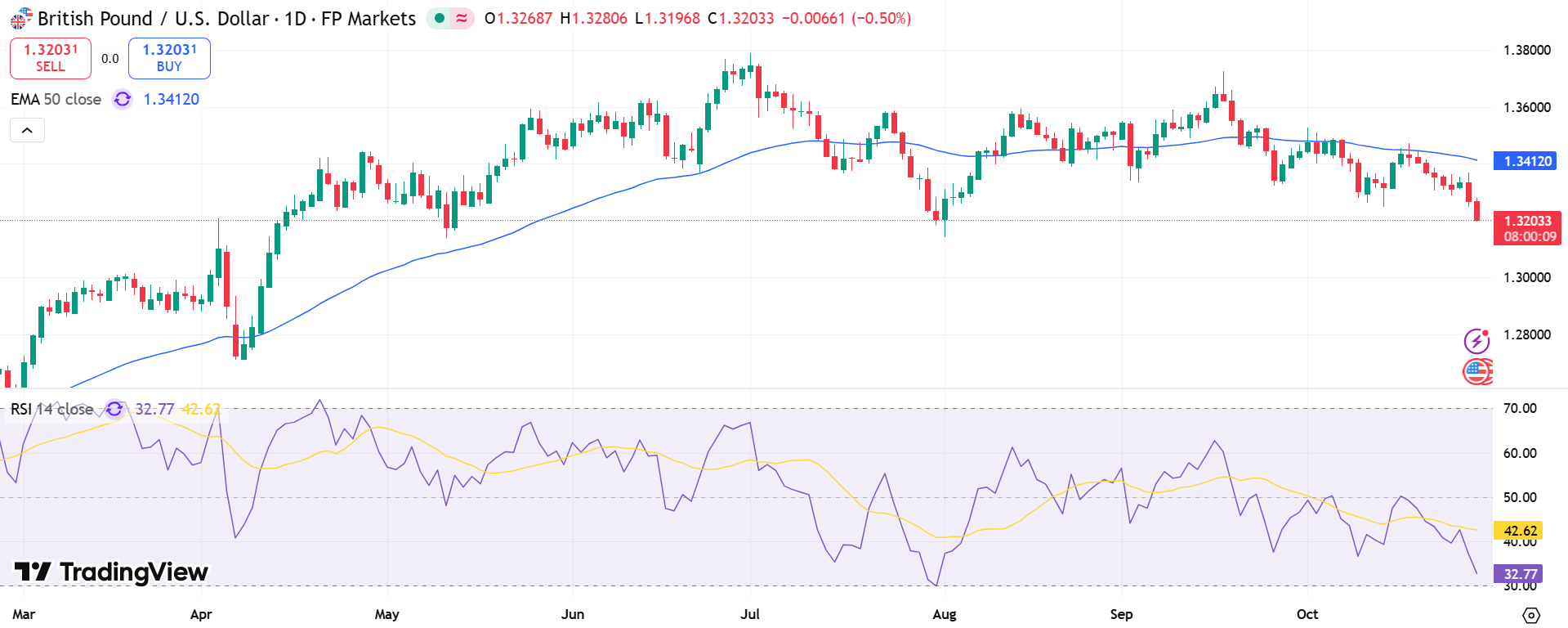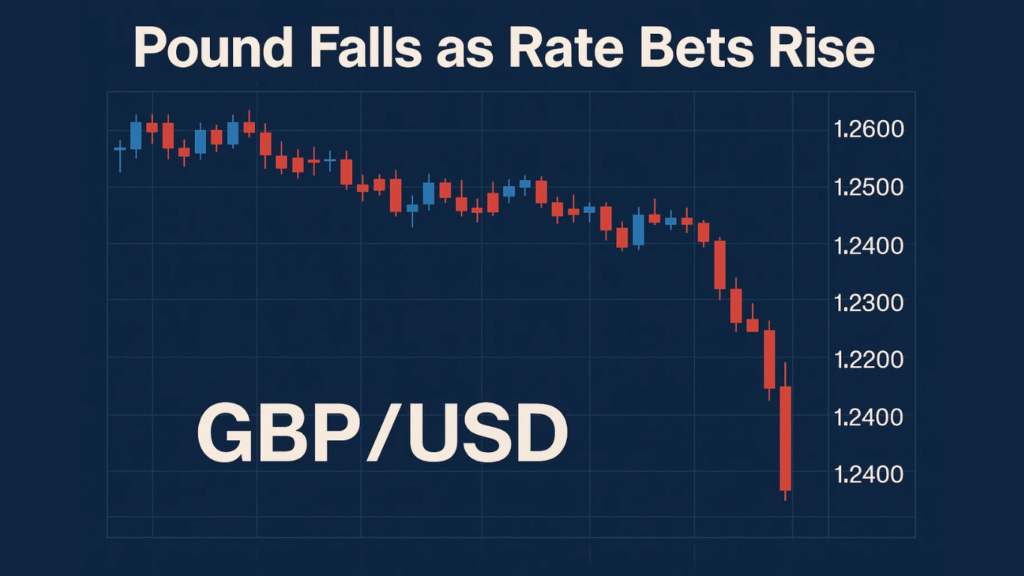The British Pound weakened for the second straight session, with GBP/USD trading near 1.3250 during early Wednesday’s Asian session. The decline followed fresh data from the British Retail Consortium (BRC) showing UK food prices falling at their fastest pace in nearly five years, a signal that inflationary pressures are easing — and that the Bank of England (BoE) could soon begin cutting interest rates.
At the time of writing, GBP/USD trades around 1.3348, slightly below Tuesday’s opening of 1.3351. Technical indicators show a bearish alignment, with prices holding below key moving averages:
- 20-period EMA: 1.3368
- 50-period EMA: 1.3381
- 100-period EMA: 1.3398
The 14-period RSI slipped to 43, maintaining a cautious tone below the neutral 50 level, confirming sellers retain control without entering oversold territory.
Initial resistance remains capped at these moving averages. A sustained break above 1.3400 would be needed to signal short-term recovery, while failure to hold above 1.3292 (38.2% Fib extension) could open the path toward 1.3244 and 1.3200, where stronger support is found.
Cooling Inflation Fuels BoE Cut Expectations
Investor sentiment toward the Pound turned sour after the UK CPI report showed inflation holding steady at 3.8% in September, missing expectations of 4%. Analysts viewed the reading as evidence that price growth is moderating faster than anticipated, reinforcing the case for BoE easing in the coming months.
According to BBH analysts, the initial market reaction reflected increased rate cut bets, but they noted that “disinflation, though slow, reduces the risk of stagflation and limits further downside for Sterling.”
The data reinforced speculation that the BoE could deliver its first rate cut in early 2026, following multiple signals from policymakers emphasizing inflation progress and economic softness.
Fed Outlook Keeps Markets on Edge

Beyond domestic factors, traders are now shifting focus to the U.S. Federal Reserve’s upcoming policy meeting. The September U.S. CPI data, scheduled for release Friday, could be pivotal in shaping rate expectations and determining whether the U.S. dollar maintains its recent strength.
Meanwhile, short-term volatility may be driven by additional U.S. data, including Existing Home Sales, though investors are largely discounting smaller indicators in favor of Fed guidance. Broader sentiment remains cautious amid U.S.-China trade tensions and lingering government shutdown risks.
As long as the pair trades below the 1.3400 resistance zone, analysts see the bias tilted downward, with potential for further weakness toward 1.3200 if U.S. inflation surprises to the upside.


